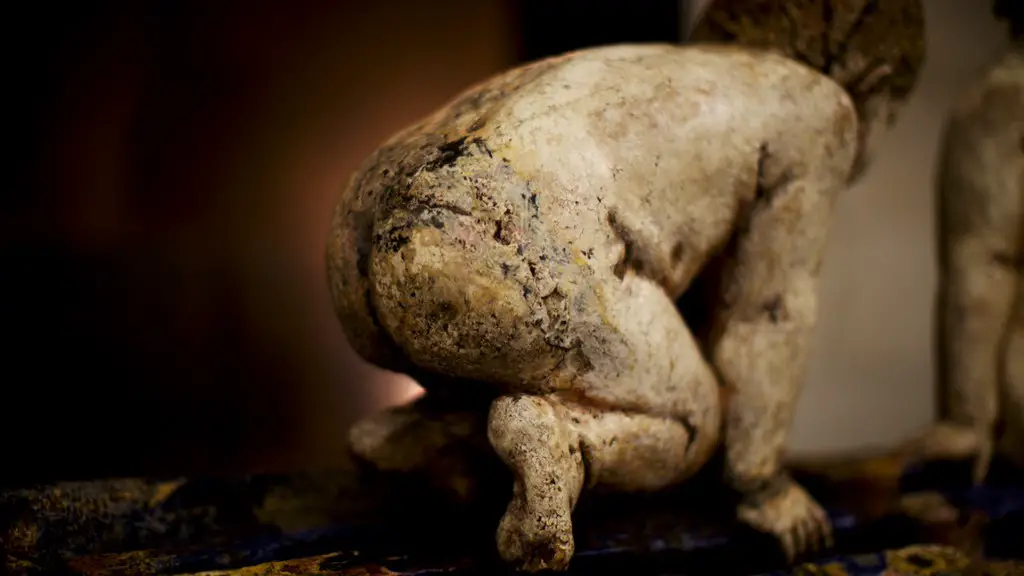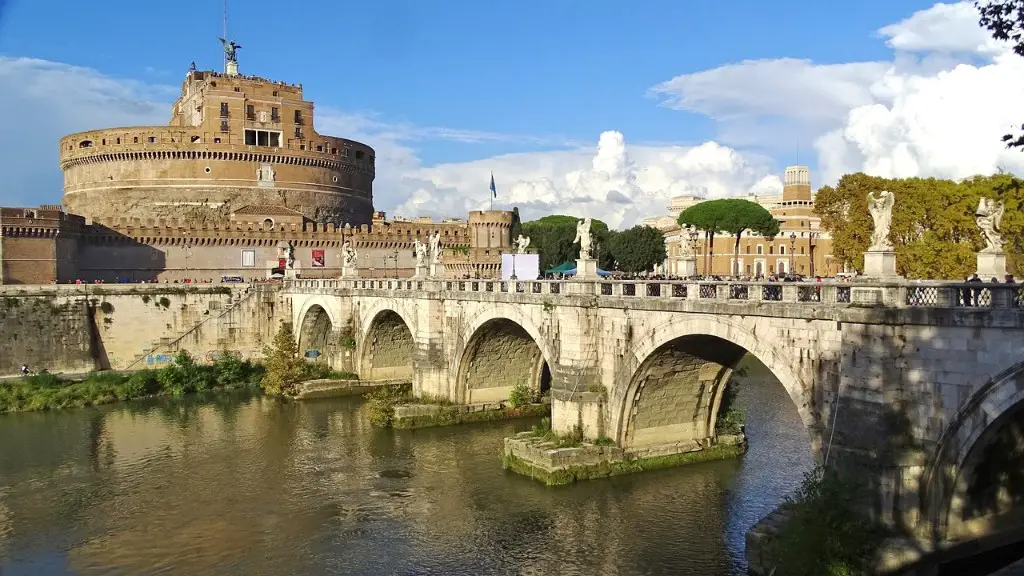The Roman Empire was one of the largest empires in world history. At its height, it extended from England and Wales in the north, to North Africa and Spain in the south, and from the Atlantic Ocean in the west, to the Caucasus and the Euphrates in the east. Ancient Rome was a complex and powerful empire that was able to adapt to its changing environment.
One reason for Rome’s success was its location. Rome is situated on the Tiber River, which was a major center of trade and transportation. The city was also close to the Mediterranean Sea, which allowed for easy trade and communication with other cultures.
Ancient Rome was also a very diverse and multicultural empire. It was home to people from all over the world, including Europe, Asia, and Africa. This diversity helped Rome to become a more adaptable and tolerant society.
Rome was also a very militaristic society. The Roman army was one of the most powerful and disciplined fighting forces in the world. This helped Rome to defend its borders and expand its territory.
The Roman Empire was a complex and powerful empire that was able to adapt to its changing environment. Its location, diversity, and militarism were all major factors in its success.
In order to adapt to their environment, ancient Rome relied heavily on engineering. They built roads and aqueducts that helped them move food and water around their empire. They also built walls and forts to protect themselves from invaders.
What was the environment like in ancient Rome?
The region’s climate is ideal for agriculture, with mild winters and hot, dry summers. This has allowed the region to develop a strong agricultural base, with wheat, grapes, and olives being grown in abundance. This abundance of food has supported the people of Rome and allowed the city to prosper.
The Po and Tiber River Valleys were some of the most fertile lands in the Roman Empire. This allowed the empire to grow a diverse selection of crops, such as olives and grains. This allowed the empire to have a food surplus to feed its population and trade with other societies. The empire also used the resulting wealth to expand its military strength.
How did the Roman Empire change the environment
Roman economic activity had a profound impact on the environment. The exploitation of forests, hunting and fishing, mining and metallurgy, pastoralism and agriculture, meant the transformation of major segments of the landscape. This had a knock-on effect on the local climate and ecology, which in turn impacted the local economy and society. The Roman Empire was the first truly global economy, and its impact on the environment was felt across the world.
Rome’s location in the center of the Italian peninsula made it a prime target for invaders. However, the city’s location also gave it some key advantages. The Alps and the Apennines mountain ranges served as natural barriers against invaders. The city’s fertile land allowed it to become a major agricultural center. Its location also made it a prime spot for trade. The city’s diverse population helped it to become a major center of learning and culture.
What environmental challenges did ancient Rome face?
The destruction of nature played a significant role in the decline of the economies of Greece and Rome. The loss of trees and other plants led to a decrease in the available resources, and the loss of animal life led to a decrease in the food supply. This had a devastating effect on the people of these countries.
The climate in Rome is quite mild, with cool winters and warm summers. The temperatures can vary depending on the time of year, with lows of 2°C in January to highs of 30°C in July and August. This makes it a great place to visit all year round.
Is Rome environmentally friendly?
Rome is a beautiful city with so much history and culture. It is also a city that is very committed to being green and sustainable. There are a variety of accommodations available that are all committed to being zero waste. This is a great option for those who are looking to be more sustainable while they travel. There are also a number of agritourisms that are great for getting away from the hustle and bustle of the city and enjoying the beauty of nature.
Rome’s rise to power is a fascinating story. A combination of military power, political flexibility, economic expansion, and good luck allowed Rome to become the most powerful state in the world by the first century BCE. This expansion changed the Mediterranean world and also changed Rome itself.
How were the Romans able to expand so quickly
The Roman Army was a crucial part of Rome’s success as an empire. The army was highly trained and disciplined, and was known for being the best in the world. With their military successes, Rome was able to expand its control over three continents: Asia, Africa, and most of Europe.
The Roman Empire was one of the most powerful empires in the world for centuries. A large part of their success was due to their ability to borrow and adapt technology from other cultures. The Roman Empire was very good at incorporating technologies from the Greeks, Etruscans, Celts, and others into their own. This allowed them to continue to improve their own levels of technology and maintain their power. Even today, some of the Roman Empire’s most impressive structures still stand.
How do people affect the environment in Rome?
The rising population has raised environmental issues, primarily the litter or Rubbish pollution. Due to increasing rubbish pollution, The administration has been shipping waste across Europe. The litter pollution has also triggered the blame games over who should be accountable instead of solving it.
Ancient Rome was indeed fortunate to be located near the Mediterranean Sea. The Mediterranean provided Rome with many natural resources that were essential to the Roman way of life. The most important of these resources was the soil. The soil in Rome was very rocky and unsuitable for farming. However, the Romans were able to overcome this obstacle by farming on hillsides and making terraces. This allowed them to make the most of the land and produce a large quantity of food. The other major natural resource that Rome had was its people. The Roman people were very hard working and skilled in a variety of trades. They were able to use their skills to farm, build roads and ships, fish, make pottery and sculptures. This made Rome a very prosperous city.
How did civilizations interact with the environment
The domestication of animals was one of the earliest ways that humans changed their environment. This allowed them to access new sources of food and shelter, and to learn new ways of using their surroundings. Hunting and irrigation were also early ways of altering the environment to suit human needs. Wing said that these methods allowed early humans to adapt to their surroundings and to make the most of the resources available to them.
Rome is known for its seven hills, but there are actually several other notable landforms within the city limits. The Janiculum is the second tallest hill in Rome and offers stunning views of the cityscape. Monte Mario is the highest hill in Rome and is a popular spot for hiking and picnicking. Monte Sacro is a popular spot for rock climbing, while Monte Testaccio is known for its Roman ruins. The Parioli district is home to some of the most expensive real estate in Rome, while the Pincian Hill is a popular spot for strolling and picnicking.
What are 3 interesting facts about ancient Rome?
1. Rome was founded by two brothers who were suckled by ashe-wolf.
2. The Ancient Romans worshipped a lot of different gods and goddesses.
3. Sometimes the Romans would flood the whole Colosseum or Circus Maximus for a boat battle.
4. Ancient Rome is underground!
5. The Romans believed that bathrooms should be communal – and public toilets were free!
6. The Ancient Romans used lead to sweeten their wine.
7. The Roman Emperor Constantine converted to Christianity in 312 AD
8. The Vatican City is the smallest country in the world and is located inside Rome.
9. The Colosseum could hold up to 80,000 spectators and was used for gladiator fights, public executions, and other entertainment.
10. There is a secret tunnel underneath the Colosseum that was used to bring in animals and gladiators without being seen by the audience.
The Alps and Apennine mountain ranges are two of the most important mountain ranges in Europe. They both have a long history of helping to protect Rome from invasions and providing strategic locations during war time. The Alps have always been a major barrier between Rome and the rest of Europe. They have forced invaders to move through narrow passages, which has given the Romans time to prepare and attack. The Apennines, on the other hand, have provided Rome with a strategic location from which to attack its enemies. In recent years, the Apennines have also become a popular tourist destination.
Warp Up
Ancient Rome was located in a region with a Mediterranean climate, which is characterized by hot, dry summers and mild, wet winters. The Roman writers Livy and Pliny the Elder noted that the first settlers in the region found it to be marshy and infested with malaria-carrying mosquitoes. To drain the marshes and make the land more habitable, the early Romans built a system of aqueducts and canals. They also built walls around their settlements to protect them from invaders.
The ancient Romans were very successful in adapting to their environment. They built their cities on hills and used the rivers for transportation and trade. They developed an irrigation system that allowed them to farm in areas that were not suitable for agriculture. They also built walls around their cities to protect them from invaders.





